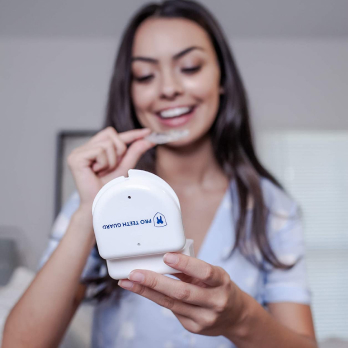TMJ Back Pain
26th Sep 2021

TMJ disorder is a painful condition characterized by the dysfunction of the temporomandibular joint, which connects your jawbone to your skull. Some of the more common symptoms of TMJ disorders and bruxism include jaw pain, migraines, headaches, ear pain, facial pain, and teeth pain. If you have TMJ, back pain may be a symptom as well.
TMJ disorder is often referred to as TMD or TMJ. Many people are unaware of some of the lesser-known TMD symptoms, which can include neck, shoulder, and back pain.

Can TMJ Cause Back Pain?
Back pain is one of the symptoms of TMJ that is not very widely known. Our bodies are full of interconnected parts, so your spine is susceptible to pain as a result of jaw pressure. The muscles in the jaw work together with the muscles of the neck, shoulders, and back, so when one muscle fails or when a joint works improperly, other muscles in the body have to work harder and take on more stress. This can cause chronic pain. It is more common to experience upper back pain as a result of TMJ problems, though lower back pain can also occur, especially if the TMJ is not treated.
Related Articles:
How Are TMJ and Back Pain Related?
The connection between TMJ and back pain goes both ways. TMJ can trigger back pain, and back pain can trigger TMJ.
Your jaw joint is responsible for more than simply opening and closing your mouth. The temporomandibular joint also plays a role in keeping your head and spinal cord balanced. When there is a misalignment of this joint, it can put stress and extra weight on your neck and back. When your jaw joint doesn’t work correctly, you may use more neck and back muscles to open and close your mouth. Unsurprisingly, this can result in pain and soreness.

Additionally, back pain can trigger TMJ by putting more stress on the joint and jaw muscles. One study found that those who have lower back pain are 1.5 times more likely to develop TMJ over a 15 year period when compared to those who don’t have low back pain. (Lee et al 2020) One possible cause may be weakened or less effective neck muscles. If those with back pain are unable to effectively use their neck muscles to help with jaw movement, they may inadvertently put more stress on their temporomandibular joint.
Regardless of whether TMJ or back pain comes first, there is no denying the two are connected. Another study conducted in 2019 examined patients with TMD and found that 48% of the TMD patients had spinal pain, compared to just 34% of the people without TMD. (Kim et al 2019) The authors concluded, “A strong association was observed between the presence of TMD and the presence of spinal pain. The association became stronger as the severity of TMD increased, indicating a positive correlation between the severity of TMD and spinal pain”. These results suggest that the sooner you work to control TMJ and back pain, the better you’ll feel and the more likely you are to avoid future problems like TMJ back pain.

How to Treat TMD and TMJ Back Pain
There are many options for treating TMJ and back pain. What works best for you will depend largely on what is causing your pain.
The first step to treating your pain is identifying where your pain begins — is TMJ causing your back pain, or is back pain causing your TMJ? This may be difficult to identify. Consider making an appointment with your dentist or healthcare provider; these professionals will be able to help pinpoint where your pain begins.
Treatment options for those whose TMJ is triggering back pain:
- Oral Splint: There are different splints, mouthguards, and night guards available for varying levels of TMJ. Speak with your dentist if you feel an oral appliance may be the best TMJ treatment for you.
- Botox Injected Into The Jaw Joint: Botox injections in the jaw help to provide relief for overactive jaw muscles.
Treatment options for those whose back pain is triggering TMJ:
- Physical Therapy
- Chiropractic Care
- Posture Adjustment
Regardless of where your pain begins, seek the guidance of a professional before attempting to begin treatments. If your back pain is causing your TMJ, your primary care provider or other medical professionals can help you begin to develop a treatment plan. This plan will vary from person to person depending on the location of your pain.
If your TMJ is causing back pain, your dentist can help you develop a treatment plan. With successful treatment of TMD, you’ll likely see your TMJ back pain diminish.
Related Articles:
What to Do for TMJ Back Pain
TMJ can cause back pain and back pain can cause TMJ pain, so identifying the root cause of your back pain will help you develop a successful treatment plan. After speaking to your healthcare provider, you may find that you need to start using an oral splint or that physical therapy might solve your problem.
Because our bodies are so interconnected, taking care of one problem often helps the other resolve as well. Finding pain relief solutions for your TMJ problems and back pain can greatly improve your quality of life.
References:
- Kim, D., Ko, SG., Lee, EK. et al. The relationship between spinal pain and temporomandibular joint disorders in Korea: a nationwide propensity score-matched study. BMC Musculoskelet Disord 20, 631 (2019). https://doi.org/10.1186/s12891-019-3003-4
- Lee, K. C., Wu, Y. T., Chien, W. C., Chung, C. H., Chen, L. C., & Shieh, Y. S. (2020). The prevalence of first-onset temporomandibular disorder in low back pain and associated risk factors: A nationwide population-based cohort study with a 15-year follow-up. Medicine, 99(3), e18686. https://doi.org/10.1097/MD.0000000000018686
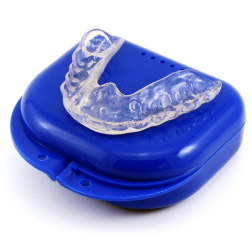
- Most Popular
- Hard Outside, Soft Inside
- 2MM Thick
- Moderate / Heavy
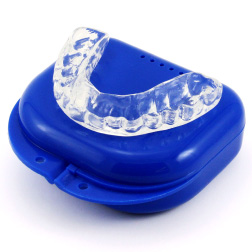
- Most Durable
- Hard Materials
- 1.5MM Thick
- Heavy / Severe
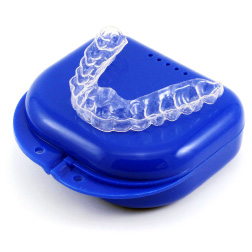
- For Day Time Use
- Thin, Barely Visible
- 1MM Thick
- Light / Moderate
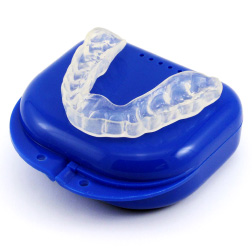
- For Clenching
- Flexible & Soft
- 1.5MM Thick
- Light / Moderate

